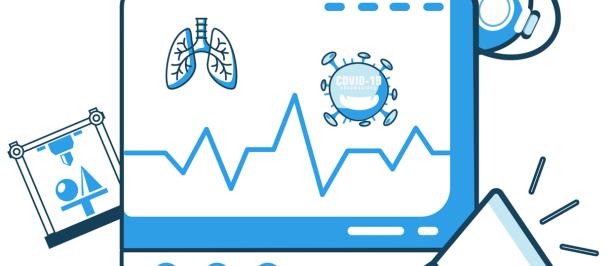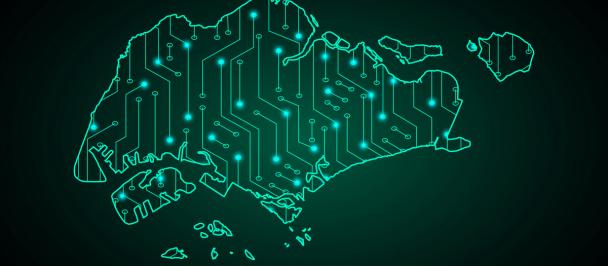Digitalization is likely to be an important aspect of COVID-19 recovery, building on the strong role that digital, and innovation more broadly, has played in the initial response. In this context, open-source approaches—free and available to all—can amplify the potential that digitalization offers. Open-source is founded on community engagement and public ownership, in contrast to proprietary solutions which seek to retain intellectual property rights and prevent modification.
Digitalization has been a crucial component in supporting healthcare systems, and communication with citizens. More widely, open data has driven the development of tools such as chatbots — and wider disease monitoring; whilst digital tools have been crucial in delivering financial and other support.
In each of these fields, there are proven open-source digital solutions. From OpenMRS, used to house more than 12.5 million patient records, through to RapidPro — for chatbot development, amongst other roles, and the open-source BlueTrace protocol, and Safe Paths, from MIT, which are informing the development of contact-tracing apps. Each of these tools have been implemented and refined by the global community. Many can compete with the best of the private sector.
At the UNDP Global Centre for Technology, Innovation, and Sustainable Development, we are collating these and other tools, in our open-source digital toolkit. We’re doing this to raise awareness. We’re hoping to prevent governments from unnecessarily duplicating work.
But open source is not a panacea. Proprietary or commercial solutions, also known as ‘closed-source’, or hybrid approaches, can also have considerable value. The open source community is also still understanding how to best work with governments, and there are valid criticisms regarding the usefulness and sustainability of some approaches. This complexity hints at a more fundamental challenge regarding government and open source.
Exploring open-source approaches can require bravery and openness to change from government. The public sector is often still reliant on outsourcing digital development, and similarly focused on buying discrete products, as opposed to holistic solutions that can require shifts to ways of thinking and working. Institutionalizing the knowledge and skills to explore and sustain open-source can also be difficult to justify to some decision-makers. And engaging with a software culture founded on openness can be antithetical to institutions that are inherently cautious about public perception.
Despite these challenges, open-source has considerable value. Particularly with COVID-19, and for lower-income countries.
The pace with which COVID-19 has evolved and spread has proved challenging for many governments. Public officials, including developers, are under pressure to build solutions. In this context, speed is crucial. However, a quick response should not be prioritized above building useful and effective solutions — nor at the expense of the rights of citizens.
Drawing on proven and rigorous open source tools allows countries to start further down the development pathway.
Although no open-source tool is going to be completely effective ‘out-of-the-box’, and each will require customization, drawing on open-source in a time of crisis can allow governments to move quickly and build on established foundations.
Second, open source allows governments to institutionalize digital development. It’s about building solutions in-house, increasing staff skills, and ensuring sustainability. External consultancy and advice can be particularly valuable, including bringing new ways of thinking and working. However, building skills and approaches internally is important for developing staff and institutions, and can lead to longer-term and even more sustainable solutions.
In some cases — although not all — building on open-source can also save money. On this note, one national government has potentially saved more than US$1 million by adapting one of the open-source tools featured in the above toolkit, instead of commissioning a new one from the private sector. They have also been able to get it functioning more quickly, by drawing on in-house digital expertise in combination with a collaboration with the open-source community.
Countries are tentatively considering, or exploring, how to recover from COVID-19. Digital has an important role to play here, including facilitating remote-working, contactless transactions, government digital service delivery, and other elements of what may become our ‘new normal’. Beyond this, though, there is real value in the longer-term benefits of open source.
Building on the usefulness of open-source in institutionalizing expertise, open-source is also a valuable way to build skills and knowledge in government and in wider society.
Open-source can be a great way to encourage entrepreneurship.
The UNDP Global Centre has partnered with Hackster.io, a million-member hardware developer community, and numerous global tech partners, to crowdsource a response to COVID-19 With all schematics, design files, and documentation provided, it allows entrepreneurs anywhere to copy these innovations. This initiative has led to contactless water and soap dispensers, as well as low-resource and low-cost tools to monitor the spread of the disease.
We’re working with our network of Accelerator Labs to provide the tools and equipment, including 3D-printers, to build local supply chains to support COVID-19 recovery.
Open-source has an important role to play in supporting how governments, societies, and economies respond to COVID-19.
It can inform local and national innovation, build skills in governments, and has the potential to increase efficiency and reduce costs. It has as important a role to play in higher-income countries as in lower-income ones, especially as it’s likely that digitalization will be a key aspect of the global recovery.
But open source is not a panacea. Proprietary solutions also have significant value. The international development and wider digital, communities have sometimes focused on an unhelpful, and arguable inaccurate, dichotomy. Open-source is considered good; while closed-source commercial products and services are inherently seen as lesser. In truth, there is often no ‘right’ option. It’s about recognizing the role that digital can play and exploring which approach is most appropriate.
A version of this article was originally published on Apolitical.

 Locations
Locations




